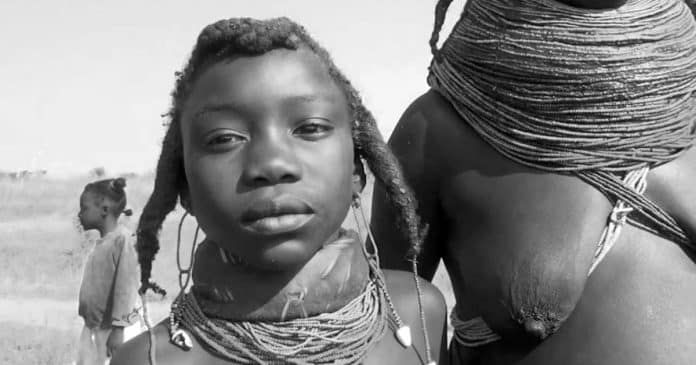The Mwera People – Religion, Society, Culture, and Ways of Life
The Mwera people are an African linguistic and ethnic group. The Mwera people are found in the Mtwara Region, Ruvuma Region, and southeast Lindi Region of Tanzania. They are also found around the border areas between Mozambique and Tanzania.
According to the oral traditions of the Mwera people, they are a Bantu group who originated around Lake Albert in northern Uganda. They moved south, back into Africa during the late medieval era and reached Lake Malawi (Lake Nyasa). They settled there into two communities – Mweras near Nyasa and the coastal Mweras that settled between the coast of the Indian ocean and the Lake. The word “Mwera” literally translates to “inland dwellers” (people who live far from the coast). Other Mwera people refer to those Mwera people that inhabit the coast as “Wamwera.” The Mweras are peaceful people. Historically, their migration and population distribution have been affected by seizures and violence inflicted on them.
The population of the Mweras was estimated to be 469,000 in 2001. They speak the Mwera language, also known as Mwela, Chimwera or Kimwera. It is a Bantu language and part of the larger Niger-Congo language family. A hodiernal tense is found in the Mwera language.
The Mwera People and Religion
The Mwera have practiced a Traditional Religion which existed through the 19th century. With the advent of German colonial rule in Tanzania, German Christian missionaries introduced Christianity to the Mwera people and gained converts. However, after World War I, the British colonialists became the rulers of Tanzania, leading to the exit of all German missionaries. The missions in Mwera were abandoned, and Islamic missionaries filled the void, especially in the coastal areas. They gained Muslim converts among the Mwera people and introduced polygyny to them. Most present-day Mwera people are adherents of Sunni Islam, with small minorities practising the traditional religion or Christianity.
Society and Culture
The Mwera people do not keep domestic animals or cattle because Tsetse flies have ravaged their traditional region. They have fished and hunted instead. They dwell in clusters of oval huts made from local mud, grass thatch and wooden poles. In present-day society, the Mwera have embraced subsistence agriculture. An increasing number of Mwera people have also moved to cities to work as wage labourers.
Riddles and storytelling are important parts of the Mwera culture. They have rites of passage like Likomanga for boys and Chikwembo for girls. The rite symbolises their entry into adulthood, and a quick marriage follows shortly after the initiation.
Women of the Mwera culture were historically known for their use of lip plates, where they pierce the upper lip in girlhood and gradually expanded over time to hold different sizes of solid plugs. They share similarities with the neighbouring Makonde people in this regard.
Mwera People Music
Like the Makonde people of the Rovuma valley, the Mwera people have a historic musical tradition. Their Luliimba ( a seven-key metal lamellophone) is notable. This instrument is notable because its construction features and design are remarkably similar to Saron found in South Asia and Southeast Asia, indicating a possible historic cultural exchange between coastal southeast Asia and coastal southern Africa. However, it is unclear whether the exchange was from Asia to Africa or vice versa.
Ways of Life of the Mwera People
The Mwera area is one of Tanzania’s most thinly populated parts, with only 10 people per square kilometre. The rainfall there is light, and the rivers flowing through dry up during the dry season. This forces people to rely on waterholes as their normal source of water.
“Mwera” is a word that translates to “those dwelling in the mainland” far from the coast. Mwera people are generally known to be very peaceful. They inhabit small oval-shaped huts with grass-thatched roofs. Constructing a Mwera house is considered a family project. The young boys dig up the clay used to fill in the mud walls, the women collect grass for thatching the roof, and the men cut the poles used to frame the house.
According to tradition, certain species of trees cannot be used for constructing houses. It appears that the reason for the prohibition is the belief that a malevolent spirit would haunt such a house. However, the prohibition apparently helps protect the selected trees from extinction.
The Mwera people mainly engage in subsistence farming with beautiful fields of peanuts and maize. It is impossible to raise cattle there because of tsetse flies. Most of their meat is gotten from fishing and hunting. Cashew nuts are the main cash crop. However, selling charcoal is a good source of income for those that live within 20 kilometres of coastal cities.
The Mwera society is matrilineal. Marriage requires the husband to move to the wife’s house. The kids are named after the maternal uncle. The maternal uncle is responsible for important ceremonies and rituals. Both girls and boys undergo traditional initiation rites that shape their cultural identities as women and men.
During leisure time, they drink tea and loiter around the stalls in the market located at the village centre. It is a time to tell stories, take care of business, play games, and visit.
For more articles on the Tanzania Tribes click here!


































